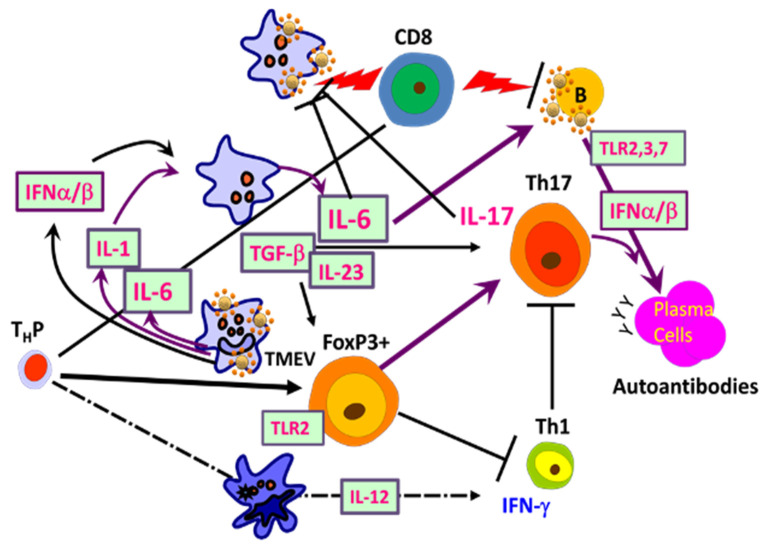Figure 5.
Interactions of adaptive immune responses to TMEV and autoantigens in susceptible mice. Infection of susceptible mice with neurotropic TMEV induces excessive levels of innate immune cytokines, including type I IFNs, IL-6, and IL-1, which promote inflammatory Th17 responses from FoxP3+ T-reg cells over protective Th1 responses, leading to high viral loads in the CNS. Various glias and antigen-presenting cells (APCs), including B cells, are permissive to the viral infection and participate in the innate immune responses. FoxP3+ T cells and Th17 cells are involved in the inhibition of protective CD8+ T cell function, which further elevates the viral persistence and pathogenesis of demyelination. B cells are also activated and stimulated to produce elevated levels of antibodies. Such high viral loads and innate cytokines, in addition to adaptive immune responses in the CNS, lead to CNS tissue damage releasing sequestered autoantigens.

